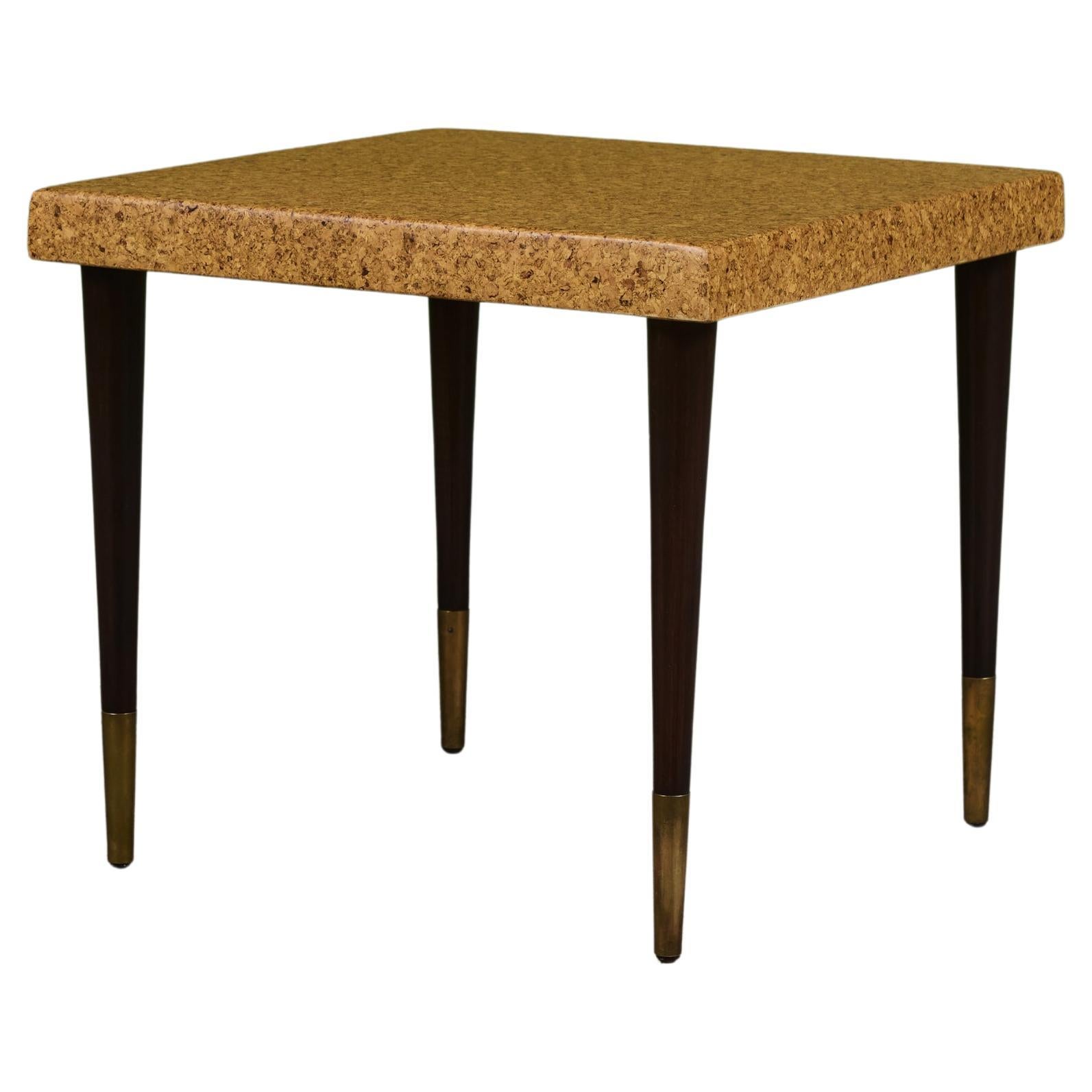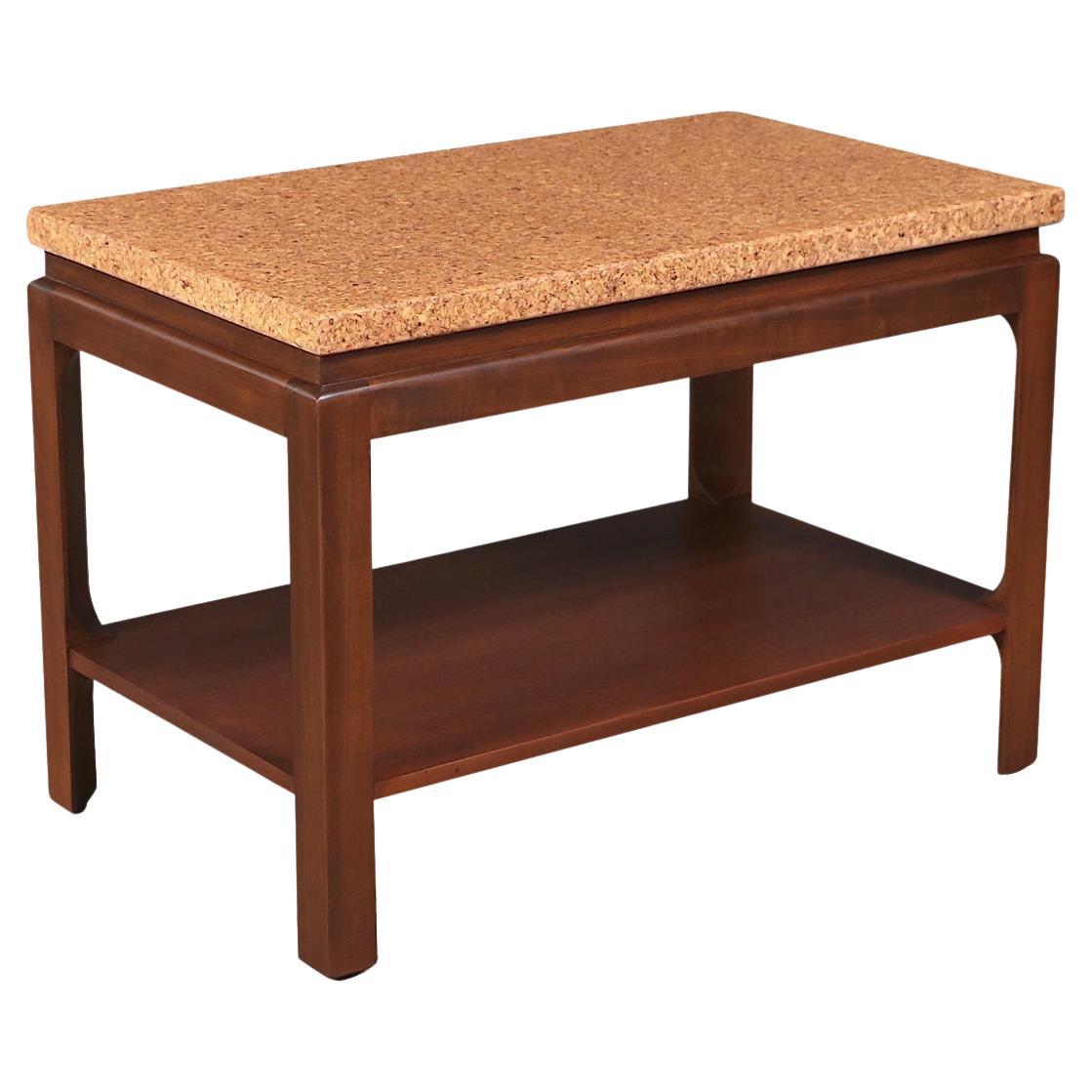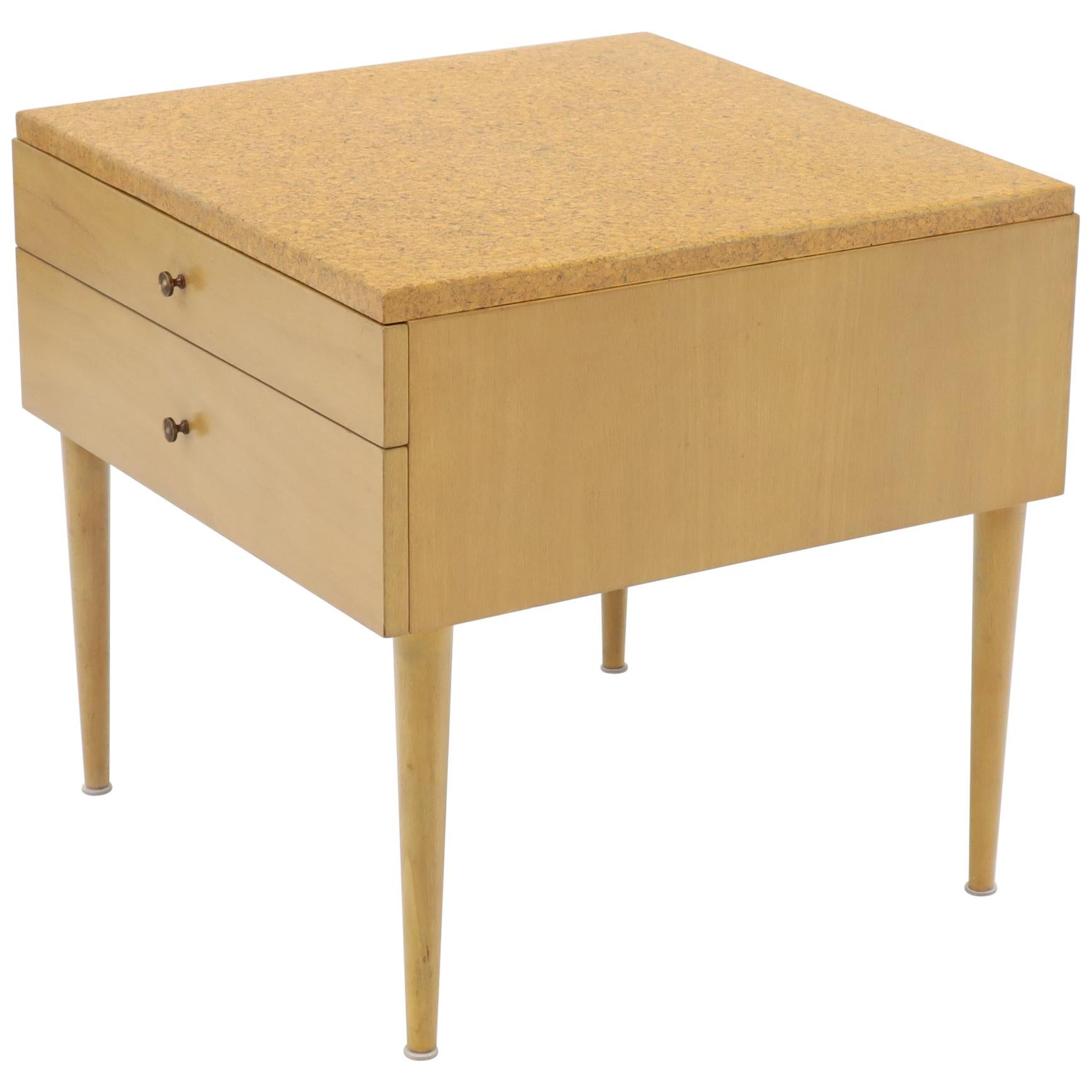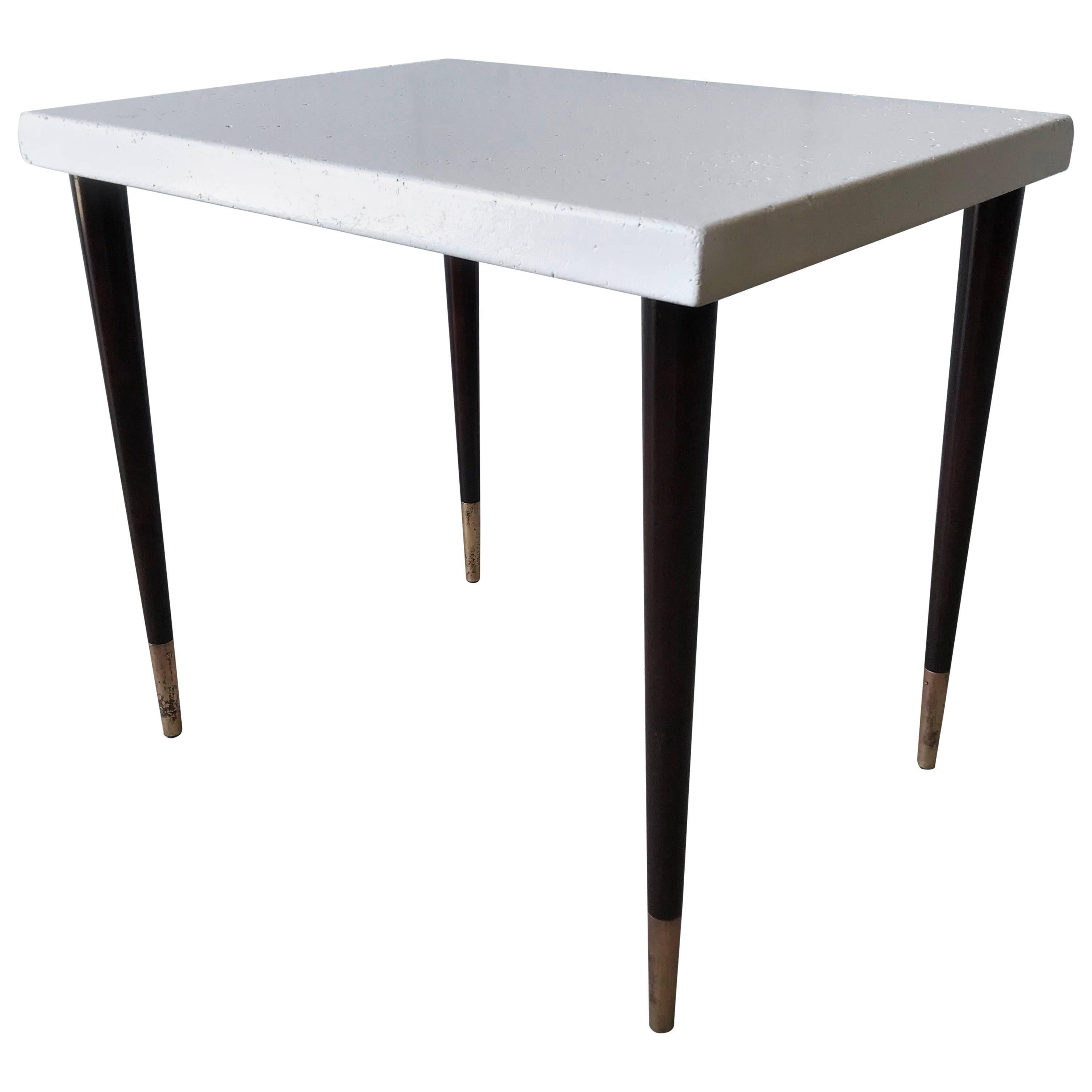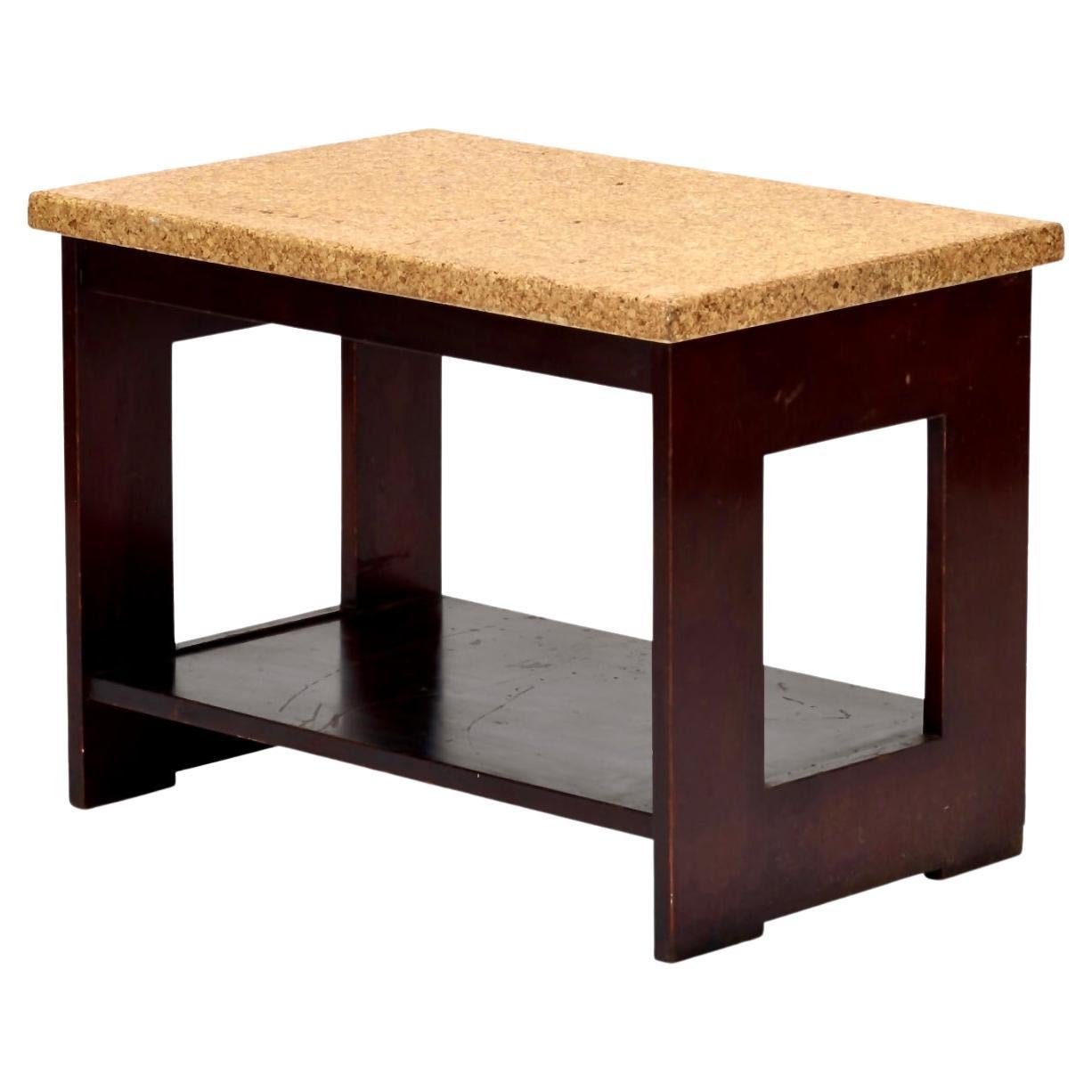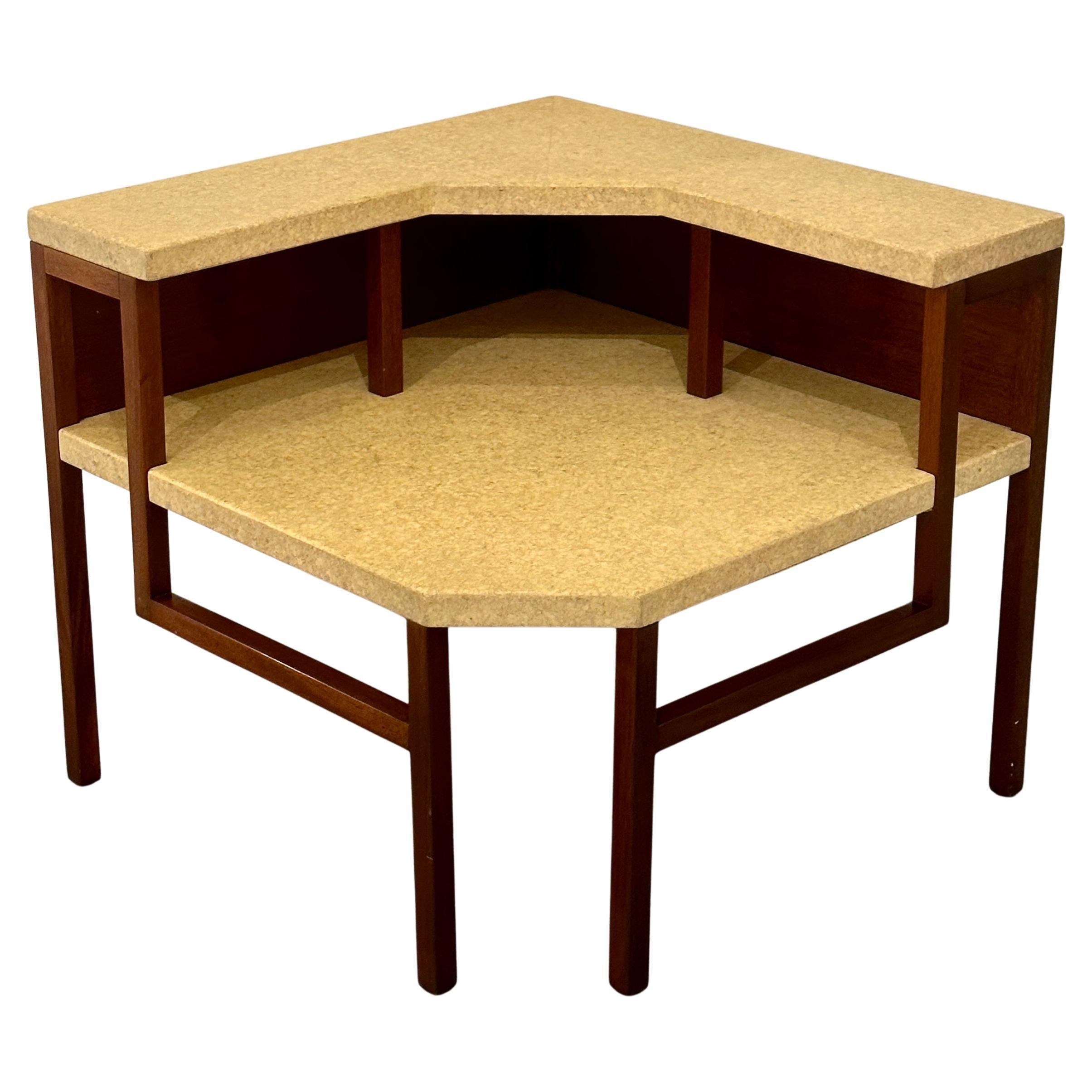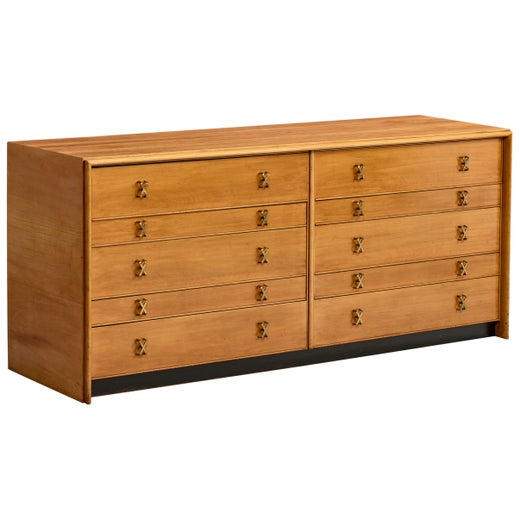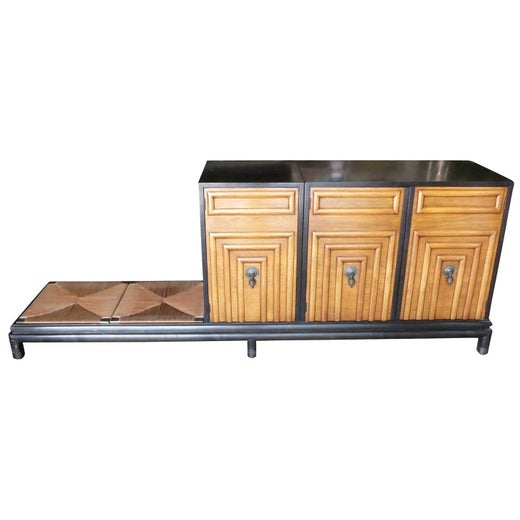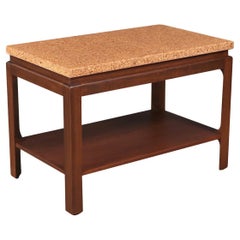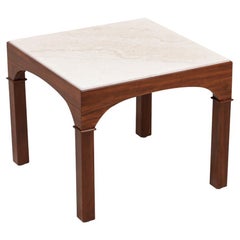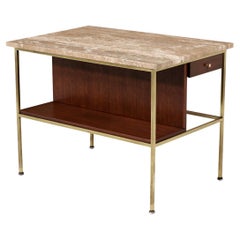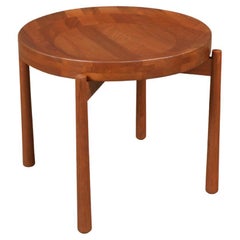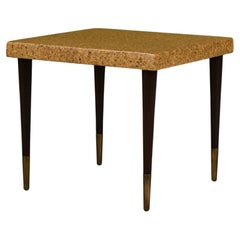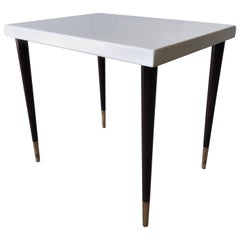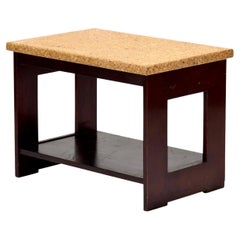Expertly Restored - Paul Frankl Cork Top Side Table for Johnson Furniture
About the Item
- Creator:Paul Frankl (Designer),Johnson Furniture Co. (Manufacturer)
- Dimensions:Height: 16 in (40.64 cm)Width: 18 in (45.72 cm)Depth: 18 in (45.72 cm)
- Style:Mid-Century Modern (Of the Period)
- Materials and Techniques:
- Place of Origin:
- Period:
- Date of Manufacture:1960s
- Condition:Refinished. Newly Refinished, Original Cork Top.
- Seller Location:Los Angeles, CA
- Reference Number:1stDibs: LU971139540292
Paul Frankl
Born in Vienna, Paul Frankl came to the United States in 1914 as part of a wave of Central European design luminaries — among them Kem Weber, Rudolph Schindler, and Richard Neutra — who were drawn by the energy and optimism of the American scene. Prolific and protean, Frankl would go on to design furnishings that are emblematic of nearly every key stylistic chord in American modernism, from the streamlined Art Deco to free-form organic shapes.
Frankl's Skyscraper cabinets, bookcases and more — introduced in 1924 — are his earliest and best-known designs (and the work by which he is most often represented in institutions, such as New York’s Metropolitan Museum of Art). Tall and narrow, the pieces have staggered shelves meant to mimic the setbacks of Manhattan office towers. A later visually expressive line — the Speed chairs and sofas, which have a raked profile suggesting motion — links Frankl to Donald Deskey, Raymond Loewy and other creators of Streamline Moderne design.
Frankl moved to Los Angeles in 1934 and luxuriated in the climate and lifestyle. His designs became lighter and simpler and found an audience among the Hollywood élite. (Katharine Hepburn, Cary Grant and Fred Astaire were clients.) Fascinated by Asian arts, Frankl produced numerous pieces — tabletops with edges that curve upward; sofas, chairs and other seating with rattan frames — inspired by Chinese and Japanese forms and materials. In the 1940s, Frankl became one of the first designers to incorporate free-form, biomorphic shapes in his work, as well as novel upholstery fabrics such as denim and nubby wool.
Frankl biographer Christopher Long argues that the designer’s easy, elegant aesthetic had an enormous influence on movie set design. As the furniture below attests, Paul Frankl’s work is ready for its close-up.
Find vintage Paul Frankl tables, dining chairs, case pieces and storage cabinets on 1stDibs.
Johnson Furniture Co.
Take a medal from the King of Sweden, a splash of the roaring twenties, and a series of talented designers and you get Johnson Furniture Co.’s elegant Art Deco and period-revival furnishings as well as a taste for why the Johnson name prevailed for over a century in American furniture manufacturing.
A wealth of forests rendered Grand Rapids, Michigan, a logging center during the 1800s. It eventually gained recognition for its furniture industry. The city became a destination for woodworkers who hailed from all over the United States as well as Europe, and Johnson Furniture Co. cofounder Carl Johnson, who had been recognized for cabinetmaking by the head of the royal family in his native Sweden, brought his royally acknowledged talents to America with his two brothers, Hjalmar and Axel in 1887. Together, they established Cabinetmakers Co. in Grand Rapids. In 1908, the brothers sold their start-up and founded Johnson Furniture Co.
Tom Handley, of the well-respected English furniture company Waring and Gillow, became an in-house designer with Johnson Furniture Co. in its early days. Handley would stay on as part of both the Johnson label and of Johnson-Handley-Johnson — a companion company that spun off from Johnson in 1922 — until his death in 1926. At the time, archaeological discoveries were all the rage. The greatest influence on Art Deco jewelry, for example, was the excavation of the tomb of King Tut in 1922, and some vintage Tom Handley designs were adaptations of Egyptian furniture. The brand specialized in a range of styles that included Art Deco, Chippendale, Queen Anne and more.
Acclaimed designer David Robertson Smith, who had made furniture in the Arts and Crafts style for the likes of Gustav Stickley, carried the Johnson Furniture Co. creative team into the early 1930s. Grand Rapids had by then become a thriving hub with respect to the mass production of furniture, and Smith’s sophisticated Dynamique line — a collection of coffee tables, cabinets and more in alluring woods such as walnut and mahogany and based on French furniture — was among the first mass-produced modern furniture made in America.
Johnson hired Lorenzo Rutili, a Carnegie Institute graduate who studied design in Europe, to lead the brand’s design division. Rutili oversaw 30 years of successful Johnson Furniture Co. collaborations with other notable designers including Paul Frankl, Eliel Saarinen, Bert England, J. Robert F. Swanson and Pipsam Saarinen Swanson. After wrapping up his tenure at Johnson, Rutili moved on to design furniture at Tomlinson in North Carolina.
During the 1960s, Kipp Stewart and Milo Baughman designed residential furnishings for Directional — a favorite of mid-century modern furniture enthusiasts — and Johnson produced these pieces, becoming the sole manufacturer for the North Carolina brand.
After a merger with Timberline Inc., Johnson Furniture Co. secured contracts for hotels, motels and university dormitories. In 1983, Johnson and Rose Manufacturing became RoseJohnson Inc. It was later purchased by La-Z-Boy.
On 1stDibs, find a collection of vintage Johnson Furniture Co. case pieces and storage cabinets, tables and other furniture.
- ShippingRetrieving quote...Shipping from: Los Angeles, CA
- Return Policy
More From This Seller
View AllVintage 1960s American Mid-Century Modern Side Tables
Mahogany, Cork
Vintage 1950s American Mid-Century Modern Side Tables
Travertine
Vintage 1950s American Mid-Century Modern Side Tables
Marble, Brass
Vintage 1960s Swedish Scandinavian Modern Side Tables
Wood, Teak
Vintage 1950s American Mid-Century Modern Side Tables
Walnut
Vintage 1960s American Mid-Century Modern Side Tables
Wood, Walnut
You May Also Like
Mid-20th Century American Mid-Century Modern Side Tables
Brass
20th Century American Mid-Century Modern End Tables
Birch, Cork
Early 20th Century American Art Deco Side Tables
Brass
Mid-20th Century American Mid-Century Modern Console Tables
Cork, Mahogany
Mid-20th Century American Mid-Century Modern End Tables
Mahogany, Cork
Vintage 1950s American Mid-Century Modern End Tables
Brass
